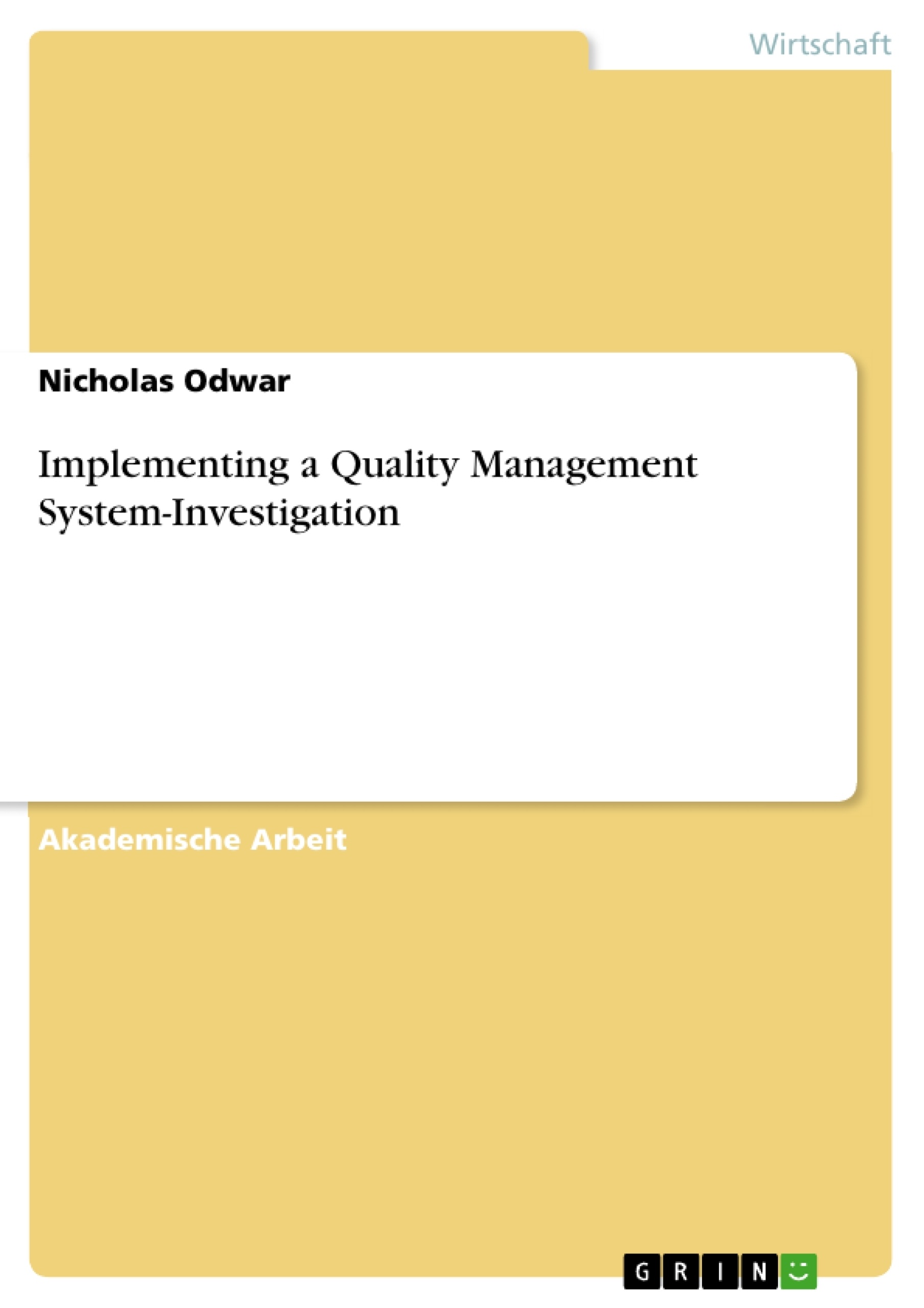The primary aim of this study is to investigate how “Quality Management Systems” (QMSs) support an organization to manage cultural issues and challenges of its implementation.
A quality management system (QMS) describes a formalized system that documents, procedures and responsibilities for attaining quality regulations and objectives. A QMS aids in coordinating and directing a company's activities to meet the client and regulatory requirements as well as enhance its efficiency on a constant basis. Generally, quality management systems are aligned with a company's purpose and strategic direction. Such systems are usually repeatable and assessable and depend on incessant improvement. By applying a quality management system, companies can detect and tackle problems earlier in the production procedure, decreasing the possible defects and the need for rework or scrapping of products. As a result, it decreases the "Cost of Poor Quality" (COPQ) linked to scrap, rework as well as returns. A QMS improves communication and collaboration among employees by providing a shared understanding of the company's processes, policies, and procedures. By applying a quality management system, a business can detect and get rid of inefficiencies in their procedures, decrease waste, enhance supplier quality by making it easy to rate and communicate with suppliers as well as streamline their operations and ease change management in the organization. These systems also offer a structured way of managing risk, which can aid the company in detecting prospective operational risks and reducing their effect on the organization. As a result, it enhances workflow efficiency. Furthermore, companies have today considered the application of quality management systems to enhance communication and collaboration among workers by offering a shared comprehension of the organization’s procedures, and regulations ensuring that all workers are on the same page (Saragih et al., 2020). This shared comprehension can assist in getting rid of confusion, decrease flaws, and enhance the general quality of the organization’s production. In the twenty-first century, the quality management system seemed to join with sustainability and transparency initiatives, as both investor and client gratification and supposed quality are progressively connected to these aspects. This research majorly focuses on assessing the advantages and challenges that come with implementing a quality management system.
- Arbeit zitieren
- Nicholas Odwar (Autor:in), 2024, Implementing a Quality Management System-Investigation, München, GRIN Verlag, https://www.grin.com/document/1487222
-

-

-

-
Laden Sie Ihre eigenen Arbeiten hoch! Geld verdienen und iPhone X gewinnen. -

-
Laden Sie Ihre eigenen Arbeiten hoch! Geld verdienen und iPhone X gewinnen. -

-
Laden Sie Ihre eigenen Arbeiten hoch! Geld verdienen und iPhone X gewinnen. -

-
Laden Sie Ihre eigenen Arbeiten hoch! Geld verdienen und iPhone X gewinnen. -

-
Laden Sie Ihre eigenen Arbeiten hoch! Geld verdienen und iPhone X gewinnen. -

-
Laden Sie Ihre eigenen Arbeiten hoch! Geld verdienen und iPhone X gewinnen. -

-
Laden Sie Ihre eigenen Arbeiten hoch! Geld verdienen und iPhone X gewinnen. -

-
Laden Sie Ihre eigenen Arbeiten hoch! Geld verdienen und iPhone X gewinnen. -

-
Laden Sie Ihre eigenen Arbeiten hoch! Geld verdienen und iPhone X gewinnen. -

-
Laden Sie Ihre eigenen Arbeiten hoch! Geld verdienen und iPhone X gewinnen. -

-
Laden Sie Ihre eigenen Arbeiten hoch! Geld verdienen und iPhone X gewinnen. -

-
Laden Sie Ihre eigenen Arbeiten hoch! Geld verdienen und iPhone X gewinnen. -

-
Laden Sie Ihre eigenen Arbeiten hoch! Geld verdienen und iPhone X gewinnen.

